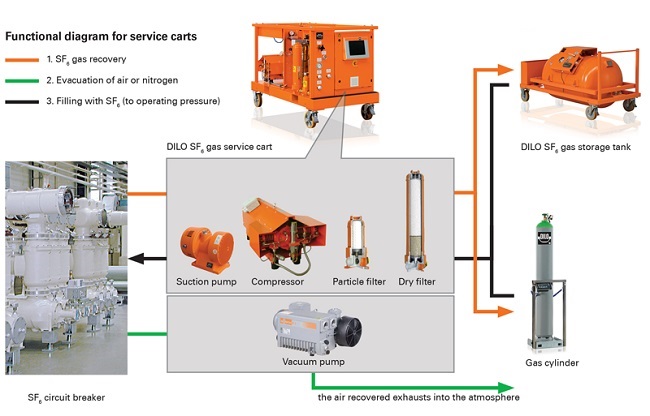
- Gas compartments prefilled with SF6 at a pressure slightly above the atmospheric pressure for transportation.
- Gas compartments optimised on the minimum SF6 quantity for a given functionality: as the lowest achievable SF6 recovery pressure is defined, the SF6 mass released to the atmosphere is directly proportional to the size of the gas compartment.
- Use of cable plugs for the connection of high-voltage cables: no need for full SF6 recovery and opening the gas compartment when connecting the high-voltage cables to the GIS. The cable compartment includes a socket and the cables are just plugged in.
- Use of power VT to energise from the low-voltage side during high voltage tests: no need for SF6 handling to connect the high-voltage source for testing. After the high-voltage test the power VT can be used as a standard instrument transformer.
- Use of bushing connections for high-voltage tests: no need for SF6 handling to connect the high voltage source for testing. However some limitations are introduced in relation to the partial discharge test performed on-site.
In pic shown a SF6 handling process and equipments form DILO company.



